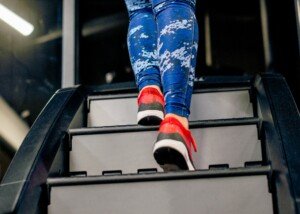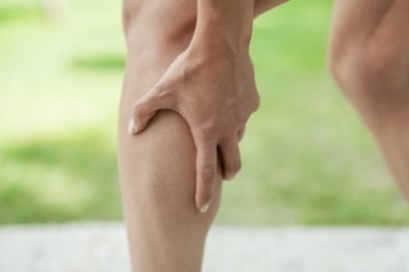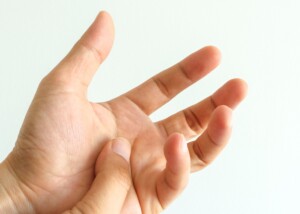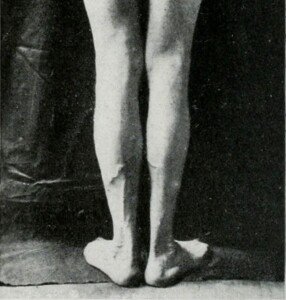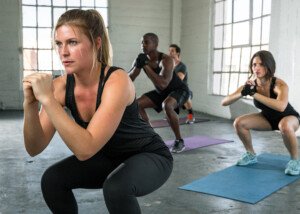Why Does Broken Clavicle Cause Pain Several Inches Away?

Are you perplexed that your mild clavicle fracture is causing pain several inches from the actual site of the break? (more…)
The True Effect of Dexedrine on Weight Loss

Wondering still if Dexedrine can actually help you lose weight?
Don’t just take this drug without first knowing some facts about this drug, because it may not be as effective for your fat loss goals as you believe it to be. (more…)
Long Slow Cardio vs. Brief Fast Cardio Bursts for Burning Fat
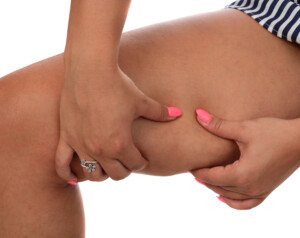
Here’s info you’ve been seeking about the fat burning effects of brief intense cardio compared to long, light intensity cardio exercise. (more…)
Can a Brain Tumor Cause a Lump on the Scalp?

How likely is it the new lump on your scalp is a brain tumor protruding through, pressing against the bone and you can feel it with your fingers? (more…)
How Long Can a Twitching Muscle Hotspot Last?
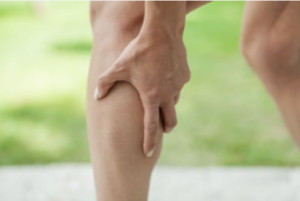
Does the longer a muscle twitches in a specific spot mean it’s more likely to be a motor neuron disease like ALS or some other serious neurological disorder? (more…)
Limbs Fall Asleep Easily? Causes, Solutions to Numb & Tingling

Do not confuse limbs “falling asleep” with numbness and tingling from a neuromuscular disease.
Though a neuromuscular disease may cause what’s described as “numbness and tingling” sensations, let’s focus on the phenomenon of your limbs “falling asleep.” (more…)
ALS Muscle Atrophy vs. Benign Atrophy: the Difference
How can you tell if the atrophy you’re noticing is benign or ALS?
Atrophy means muscle wasting; this outcome may have a non-fatal cause, but the appearance comparison is something that’s on the mind of a lot of very worried people. (more…)
How to Take Your Heart Rate on Your Body While on a Treadmill
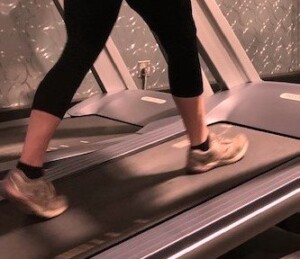
Taking your heart rate on your body rather than the machine is more accurate.
When using a treadmill, here is how to do that. After all, a machine’s recording may be very innacurate.
Though checking heart rate during treadmill use shouldn’t be obsessive, you should be aware of your heart’s effort during the exercise to ensure that your heart rate stays within a safe range for your age and individual physical condition.
Consult with your doctor if you’re on any medications. Some drugs, such as beta blockers, influence exercise heart rate. Caffeine and nicotine also impact it.
Find out what your resting heart rate is by taking a 60-second pulse for three consecutive mornings while still in bed and calm. Add the numbers and divide by three.
You can do this with a heart rate monitor or by manually palpating (feeling) at the two following sites:
- Radial artery. This is the preferred site. If you’re right-handed, place your index and middle fingers just below the left side of your left wrist while palm is up; and vice versa if you’re left-handed.
- Carotid artery. Locate the “Adam’s apple” of your neck; either side of it practically lines up with the outside corners of your eyes. Place index and middle finger on one side, OR the other, but not both. Keep thumbs off neck. Do not press hard or this may slow pulse and cause dizziness.
Taking Heart Rate While Using the Treadmill
You will be walking at a comfortable pace on the treadmill during the heart rate check.
Maintaining movement during the check will prevent lightheadedness or blood-pooling in the legs.
Novice or poorly-fit exercisers, and people on blood pressure medication, are especially vulnerable to faintness and blood-pooling during sudden cessation of activity.
Another reason to keep walking on the treadmill is to maintain your focus and prevent the temptation of quitting the exercise altogether.
You needn’t continue moving at the exercise pace. Slowly walking will suffice.
There is no need to exit the treadmill to take your pulse. Walking will work just fine for the heart rate check — even if you had been running on the treadmill.
The machine’s computer that checks heart rate while your hands are on the sensors may not be accurate.
This is why, when I was a personal trainer years ago, I told my clients to take their pulse manually with their fingertips, and I preferred the radial artery for the reason mentioned earlier.
Yes, the sensors on a treadmill can give a false reading. Walk slowly on the tread and palpate for your pulse.
Details About Taking the Radial Pulse
Locate your radial artery. Begin with a count of 1 (your heartbeat). Continue counting the beats for 10 seconds. Multiply by six.
It’s possible to incorrectly take the heart rate via the following means:
Incorrectly starting the count; not starting or ending during the time frame; losing count during the time frame; and improper finger placement.
If the beginning and end count are missed, an error of 12 beats per minute can result!
Your ideal heart rate range can be best determined by your physician, in concert with a certified personal trainer.
For apparently healthy people, frequent heart rate checks while using a treadmill are not necessary.
However, some healthy people (those who have been declared healthy by their doctors) are obsessed with this.
They have what might be called a “heart rate chondria.” You need to work on overcoming this.
Constant heart rate checks while using a treadmill may interfere with the efficacy of the workout.
 Lorra Garrick has been covering medical, fitness and cybersecurity topics for many years, having written thousands of articles for print magazines and websites, including as a ghostwriter. She’s also a former ACE-certified personal trainer.
Lorra Garrick has been covering medical, fitness and cybersecurity topics for many years, having written thousands of articles for print magazines and websites, including as a ghostwriter. She’s also a former ACE-certified personal trainer.
Five Squat Exercises for Women Including Postmenopausal

Learn four different squat exercises that ANY woman can choose from to lose weight, improve bone strength and fitness. (more…)
How Do Overweight Women Benefit from Judo?









